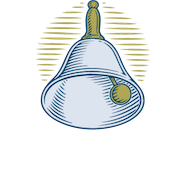Young children take in a tremendous amount of information from their environment with what Dr. Maria Montessori called “the absorbent mind.”
Our Casa program provides an enriching hands-on learning experience with specially formulated Montessori materials for math, language, sensorial exploration, practical life activities, art, science, and geography.
Making choices and using coordinated movements to accomplish tasks leads the child toward self-regulation and self-control. Children develop observation and problem-solving skills. By manipulating, experimenting, and discovering, children begin to move from the concrete to abstract as they prepare for the more complex studies in preparation for the EMS elementary program.
Children are learning language long before entering the Montessori classroom. By using their senses as tools, children absorb information about their language. During the first two years of Casa, students prepare themselves for (formal) language study by working in the practical life and sensorial areas with materials that refine auditory, oral, visual, and sensory/motor skills which are necessary for writing and reading in the third year. Language spans every other area as an integrated source of preparation for a well-planned approach to further learning.

- recognize and manage their emotions,
- demonstrate caring and concern for others,
- establish positive relationships,
- make responsible decisions, and
- constructively handle challenging social situations
The Practical Life curriculum is the base of the Montessori method. Its goals span the three-year age cycle, providing practical experience in everyday activities. These activities not only teach physical skills, but also prepare the children for subsequent or concurrent work in mathematics, language, and socialization. The necessity of making choices and using coordinated movements to accomplish a task leads the child toward self-regulation and independence. The ultimate lesson, however, is concentration…without it, nothing else is possible. The Practical Life curriculum includes gross- and fine-motor skills, respect and care for environment, grace, courtesy and etiquette.
The purpose and aim of Sensorial work is for the child to acquire clear, conscious, information and to be able to then make classifications in his environment. Dr. Montessori believed that sensorial experiences began at birth. Through senses, the child studies his environment.
Through work with the sensorial materials, the child is given the keys to classifying the things around him, which leads to the child making his own experiences in his environment. Sensorial exercises were designed by Dr. Montessori to cover every quality that can be perceived by the senses such as: size, shape, composition, texture, sound, matching, weight, temperature, and so forth. Because the exercises cover such a wide range of senses, Montessori categorized them into different groups: visual, tactile, baric, thermic, auditory, olfactory, gustatory, and stereognostic with materials specific to each.
The Sensorial Curriculum is the key to knowledge in the Montessori classroom. It builds on the foundation of the Practical Life Curriculum and prepares the way for children to progress into academic work through development of observation and problem-solving skills. The Sensorial curriculum includes visual learning, tactile learning, olfactory learning and gustatory learning.
Language is the basis of the process of thinking; the child will need to be spoken to and listened to often. The child will need a broad exposure to language, with correct articulation, enunciation, and punctuation. The child will need to experience different modes of language and to hear and tell stories. Most importantly, the child needs to feel free and be encouraged to communicate with others. This curriculum involves auditory preparation, visual preparation, motor preparation, analysis, reading, writing and function of words.
Dr. Maria Montessori proposed that logical thought stems from the human mind’s ability to organize and categorize. The aim of the math curriculum at the Casa level is to help students develop their thought processes, not to simply teach (rote) math facts at an early age. With hands-on materials, students begin to understand the concrete through manipulation, experimentation, and invention, which prepares them for abstract study at the elementary level.
Culture is all encompassing in a Casa classroom. Dr. Maria Montessori had a unique way of defining cultural studies-she incorporated the specific areas of history, geography, physical sciences, botany, and zoology into the studies within this area. These components support Montessori’s strong belief in the need for global education. Exploration and inquiry are encouraged by fostering and nurturing the young child’s curiosity. By exploring in the cultural studies area the child defines his individual spirit as well as a sense of wonder of people and the world.
Third year Casa students participate in EMS’ Science Fair sharing their findings with peers and parents.
